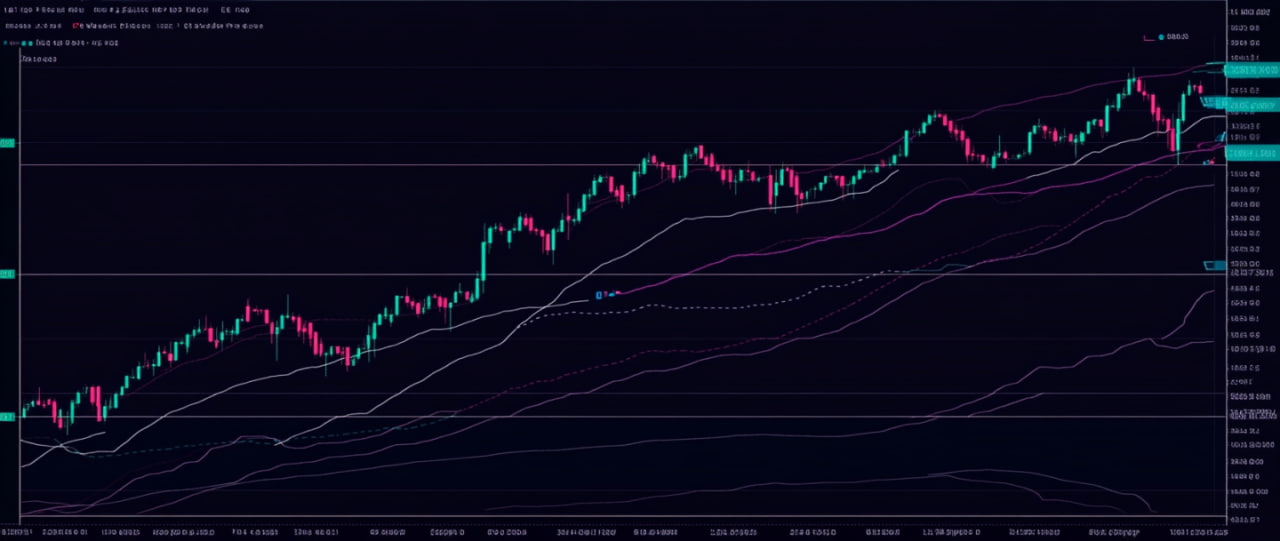Stochastic RSI is an indicator that combines elements of the Stochastic Oscillator and the Relative Strength Index (RSI). It is widely used by traders to assess overbought or oversold conditions in cryptocurrency assets. Unlike traditional RSI, Stochastic RSI is more sensitive to price changes and provides deeper insights into market dynamics.
- What is Stochastic RSI?
- How is Stochastic RSI Calculated?
- Application of Stochastic RSI in Cryptocurrency Trading
- Advantages and Limitations of Stochastic RSI
- Conclusion

What is Stochastic RSI?
Stochastic RSI is a technical analysis indicator used to determine whether an asset is overbought or oversold. Developed by Tushar Chande and Stanley Kroll in 1994, this tool combines the Stochastic Oscillator and the Relative Strength Index (RSI). The main goal of Stochastic RSI is to enhance the sensitivity and responsiveness of traditional RSI, allowing traders to more accurately identify potential market reversal points.
The key difference between traditional RSI and Stochastic RSI is that the former evaluates the relationship between current closing prices and recent highs and lows, while Stochastic RSI assesses the relationship between the current RSI value and its maximum and minimum values over a specific period. This makes Stochastic RSI more sensitive to price changes, allowing it to more precisely indicate overbought or oversold conditions.
How is Stochastic RSI Calculated?
Stochastic RSI is calculated in several steps. The primary formula is as follows:
Stochastic RSI = (RSI - Lowest RSI) / (Highest RSI - Lowest RSI)
Here:
- RSI — the current value of the Relative Strength Index;
- Lowest RSI — the lowest RSI value over the specific period;
- Highest RSI — the highest RSI value over the same period.
Stochastic RSI is typically calculated for a 14-day period, but this parameter can be adjusted according to the trader's preferences. The result ranges from 0 to 1, where values above 0.8 indicate overbought conditions, and values below 0.2 suggest oversold conditions.
To visualize the calculations of Stochastic RSI, here is an example table:
| Day | Closing Price | RSI | Lowest RSI (14 days) | Highest RSI (14 days) | Stochastic RSI |
|---|---|---|---|---|---|
| 1 | 100 | 50 | 30 | 70 | 0.50 |
| 2 | 105 | 55 | 32 | 72 | 0.54 |
| 3 | 110 | 60 | 35 | 75 | 0.62 |
| 4 | 108 | 58 | 34 | 74 | 0.60 |
| 5 | 115 | 65 | 40 | 80 | 0.75 |
Application of Stochastic RSI in Cryptocurrency Trading
Stochastic RSI is widely used by cryptocurrency traders to identify optimal entry and exit points. Unlike traditional RSI, which may not account for minor price fluctuations, Stochastic RSI allows traders to react more accurately to rapidly changing market conditions. This indicator is often used in combination with other technical analysis tools to confirm signals.
There are several strategies for using Stochastic RSI:
- When Stochastic RSI exceeds 0.8, it may indicate that an asset is overbought, signaling a potential sell opportunity.
- When Stochastic RSI falls below 0.2, it may indicate that an asset is oversold, signaling a potential buy opportunity.
- Crossing of the Stochastic RSI lines is another important signal. When the fast line crosses the slow line from below, it may indicate the beginning of an upward trend. Conversely, crossing from above may signal the beginning of a downward trend.

Using Stochastic RSI in conjunction with other indicators such as moving averages or support and resistance levels allows traders to make more informed decisions, minimizing risks.
Advantages and Limitations of Stochastic RSI
Like any other technical indicator, Stochastic RSI has its advantages and limitations. Key advantages include:
- Increased Sensitivity: By combining the Stochastic Oscillator and RSI, the indicator more accurately reflects market fluctuations.
- Flexible Settings: Traders can adjust the calculation parameters, adapting Stochastic RSI to their strategies.
- Suitable for Short- and Long-Term Trades: The indicator can be used for day trading as well as long-term investments.
However, Stochastic RSI also has some drawbacks:
- False Signals: Due to its high sensitivity, the indicator can produce false signals, especially in sideways markets.
- Dependence on Other Indicators: To obtain more accurate signals, Stochastic RSI should be used in combination with other tools.
- Not Suitable for All Markets: In some market conditions, such as highly volatile assets, the indicator may give inaccurate signals.
Conclusion
Stochastic RSI is a powerful technical analysis tool that can be valuable for cryptocurrency traders. Its high sensitivity to market changes and customizable settings make it an indispensable assistant for both novice and experienced traders. However, it is important to remember that no indicator can guarantee success. Therefore, Stochastic RSI should be used in combination with other analysis tools and risk management approaches.





